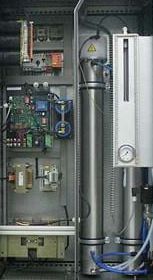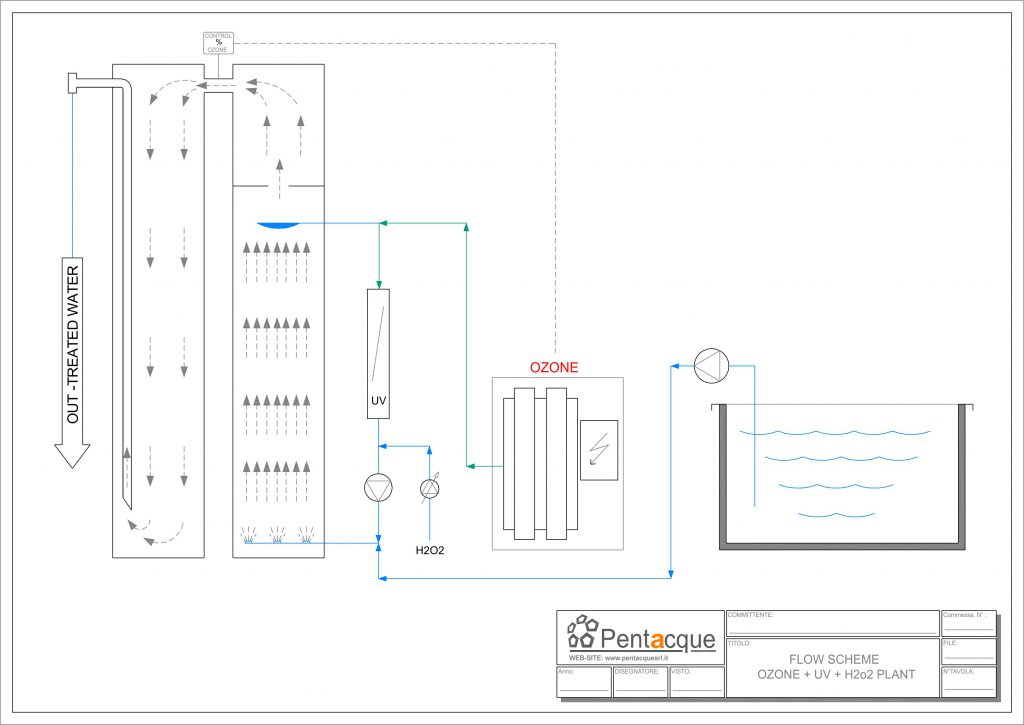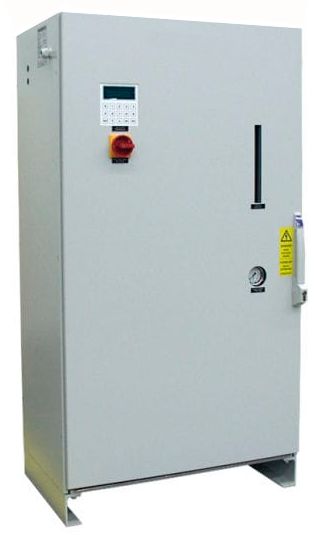Ozone plants find a great application for industrial water purification treatments.
Ozone plants are very diverse, and based on the pollutants to be treated, they differ considerably in both construction and technology.
Ozone systems can be :
- Simple ozone plant
- Ozone system combined with hydrogen peroxide
- Advanced oxidation ozone plant (ozone + hydrogen peroxide + UV)
- Ozone plant with or without reaction reactor
An ozone plant can be used to break down COD, to decolorize wastewater to reduce the concentration of organic and inorganic components, ozone is particularly active with phenols, surfactants, nitrites, nitrates, sulphide, iron and manganese.
Simple ozone plant:
This plant finds routine applications, where it is necessary to eliminate some substances in not excessive concentrations of pollutants and disinfection is welcome, the ozone plant supports water recycling, avoids fermentation or biological degradation that limit the reuse of water.
Another application of the simple ozone plant is the mineralization of sludge from sewage plants and its reduction, which allows a less expensive disposal and a higher treatment capacity of the sewage plant.
Ozone system combined with hydrogen peroxide:
A purification plant that combines ozone with hydrogen peroxide has a higher oxidation capacity than ozone alone.
The support that creates the addition of hydrogen peroxide to the ozone is of considerable importance, the ozone decomposing makes a first oxidation and creates as under reaction of free radicals that have a higher oxidative power, hydrogen peroxide has the task to amplify this second reaction and in a very economical way allows to treat higher concentrations of pollutants.
The combination of hydrogen peroxide and ozone, is always functional and recommended in almost all cases of industrial water treatment, the use of this combination amplifies the oxidation reaction of some organic components and surfactants, without producing under added chemicals or salinity.
Advanced oxidation ozone plant :
This solution is the most studied and that has aroused a lot of interest in water treatment, ozone performs an oxidation reaction and decomposes by initially activating on organic matrices that dismantle the same oxidative matrix of ozone.
Advanced oxidation combines the ozone action of hydrogen peroxide and UV rays.
This combination of systems has many advantages, UV rays perform a reaction of cell lysis on the water by relieving the task to the ozone that is catalyzed by the same UV rays, this system allows to increase exponentially the first direct oxidative reaction of pollutants by the ozone, hydrogen peroxide intervenes in this phase for the development and sustenance of the production of free radicals that with their oxidizing power work on the remaining pollutants and having less lysis reactions as they are already completed, the oxidizing power and purification capacity is even higher.
This advanced oxidation ozone system is the most economical in terms of conduction with a greater capacity to treat pollutants among those using ozone.
Ozone plant with or without reaction reactor:
The reaction reactor is necessary to carry out the oxidation by ozone and other chemicals, in the sector this phase is little considered and is seen as a simple reaction tank.
Our experience has led us to completely improve and modify the reactor.
The use of a reactor that respects the flow velocities, the type of counter-flow mixing, the position of the dosing and injection of water and products, the production of strong initial turbulence, help to increase the efficiency of the oxidation ozone purification system, and make the treatment more economical.
It is also important to manage the pH of the wastewater to be treated, as the reactions are modified by temperature and pH.
The right sequence and flow management, and the control probes, allow to use all the ozone and chemicals, not to create waste with unnecessary dosages and ozone residues in the wastewater.



